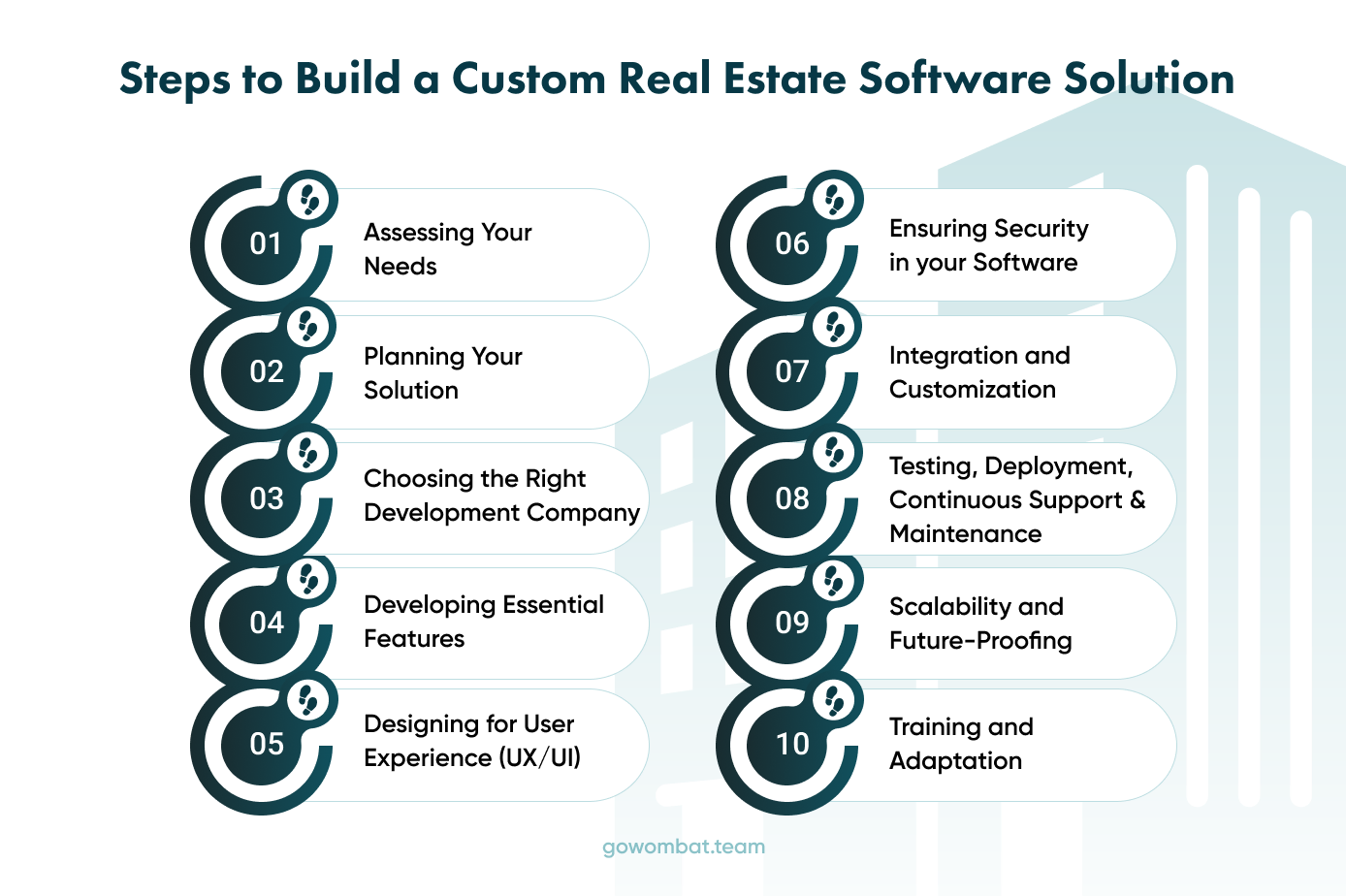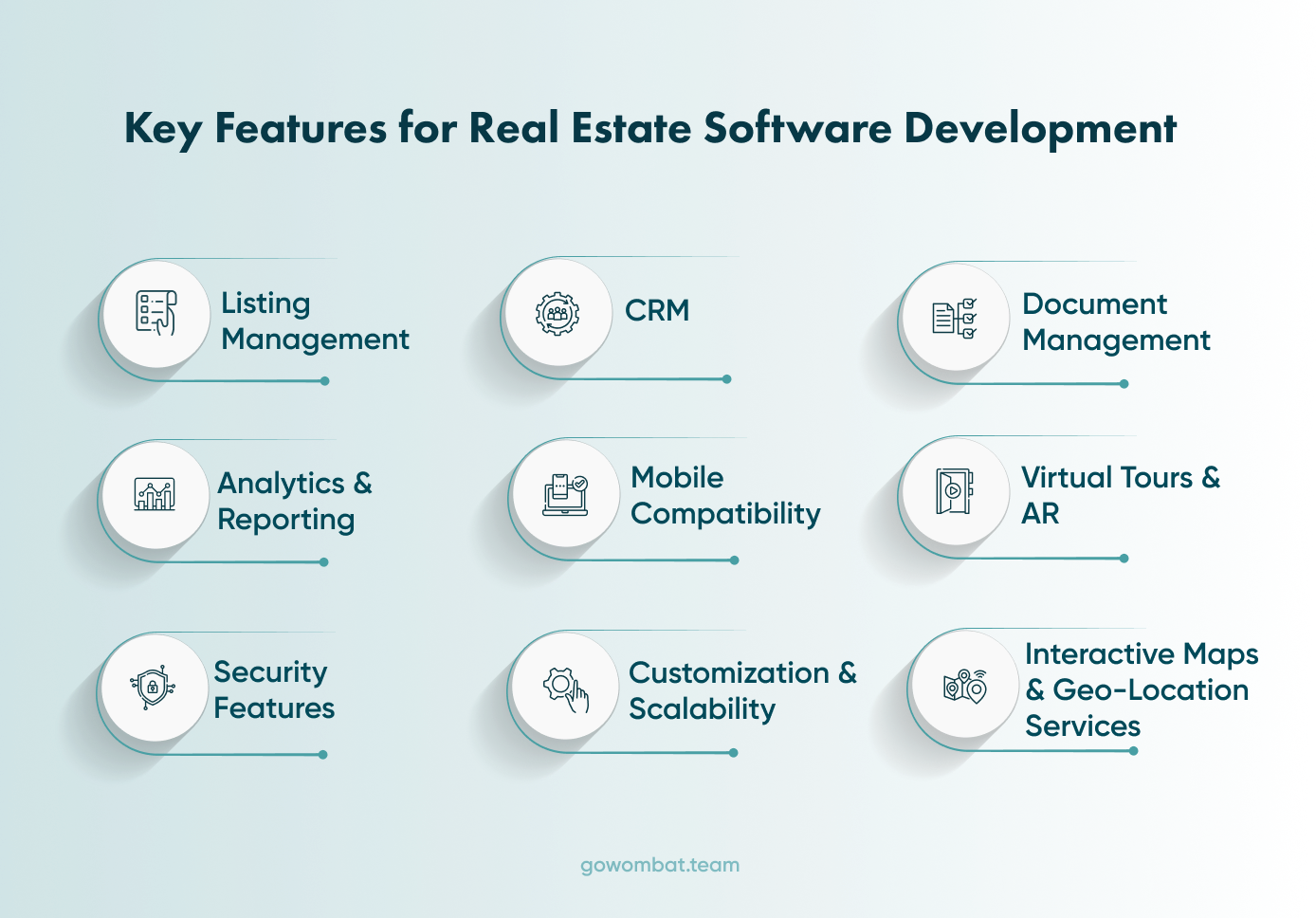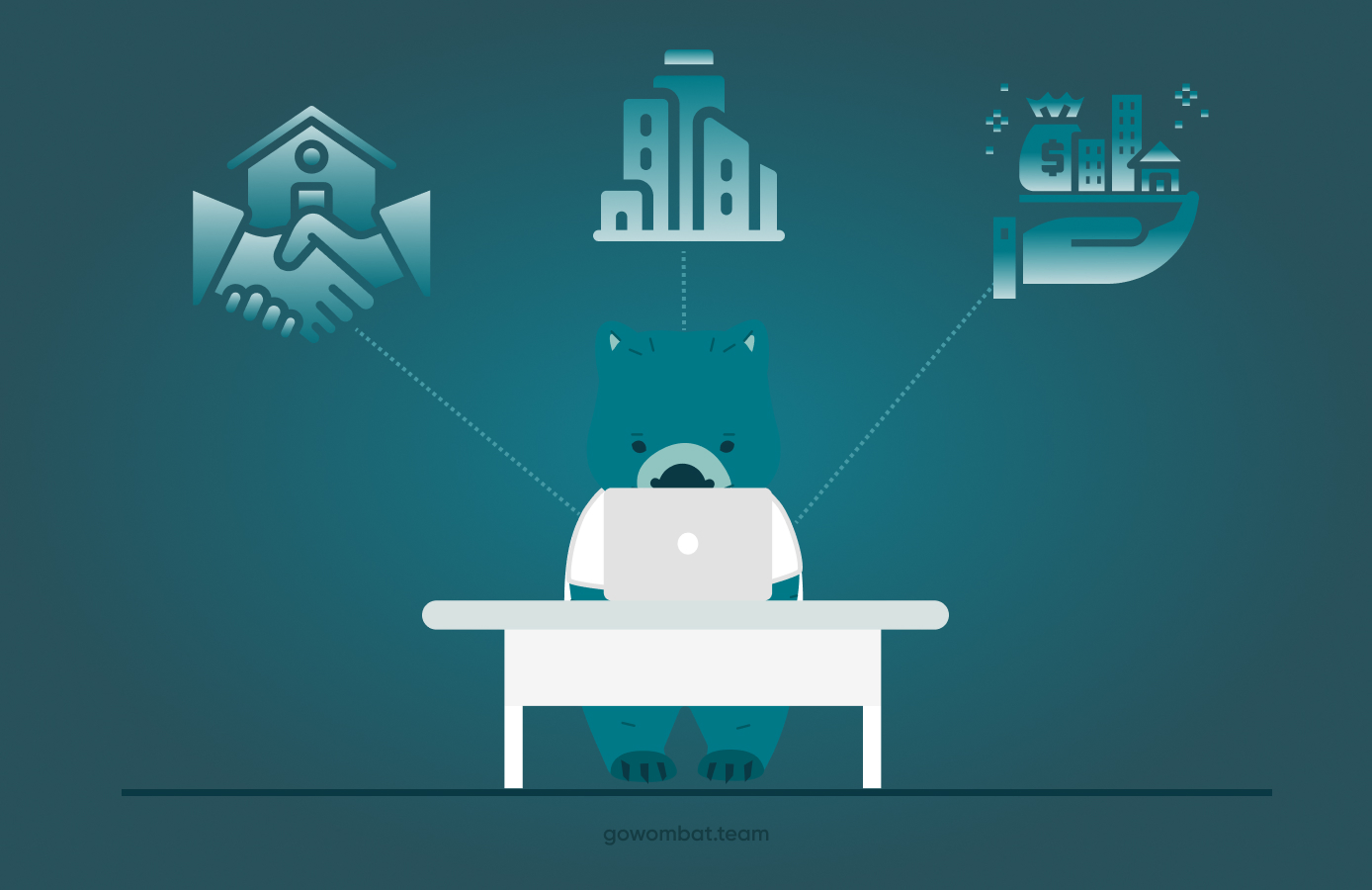How to Build Custom Real Estate Software Solution


Introduction
As the real estate market evolves rapidly, the expectations of consumers are reaching new heights, driven by ongoing technological advancements. To keep pace, real estate agencies are turning to technology to enhance their operations, improve customer relationships, and boost overall efficiency and sales. Custom software solutions, from real estate management systems to intuitive mobile applications, are becoming essential. These tools are specially designed to meet the unique challenges of the industry, helping agencies navigate the complexities of today's market with greater ease and effectiveness. In this comprehensive guide, we’ll explore the steps involved in building custom real estate software, including the development process, features, and essential considerations like UX/UI design, security, and scalability.
Custom real estate software solutions like property management, analytics and reporting, and ERP systems can significantly elevate the operational efficiency, customer service, and strategic insights of real estate businesses. At Go Wombat, we understand the nuances of real estate software development and can help your business leverage technology to stay ahead of the competition.

1. Assessing Your Needs
The foundation of any successful custom real estate software project is a clear understanding of your specific business needs. Whether you are looking to streamline operations, property management, enhance property listings visibility, or improve customer relationship management, identifying your goals early on will direct the development process and ensure the final product truly aligns with your strategic objectives. Before diving into real estate software development, it’s essential to identify your business's unique requirements and how custom solutions can meet these needs.
2. Planning Your Solution
Once needs are assessed, the next step is thorough planning and requirements gathering. This phase involves defining clear objectives for your real estate project development which includes deciding on the software’s architecture, technologies to be used, and the roadmap for development and deployment. Planning also involves setting a realistic project scope, timeline, and budget for the project. Engaging with stakeholders including real estate software developers, marketers, and end-users is crucial to outline necessary features and functionalities.
3. Choosing the Right Software Development Company
Selecting the right real estate software development company is more than a choice, it's a pivotal decision that can dictate the success of your technological investments. The ideal partner combines deep industry knowledge with extensive experience in real estate software development. This ensures they not only grasp the subtle complexities unique to the real estate sector but can also deliver a comprehensive suite of services, from discovery phase through to ongoing maintenance and support. The discovery phase is where they work closely with you to define your project’s scope. Here, every potential feature is evaluated to ensure it aligns perfectly with your business objectives, integrating what’s necessary and eliminating the superfluous. This phase is crucial in laying a solid foundation for a tailored solution that truly fits your needs.
Additionally, the right firm will guide you in selecting the optimal technology stack, crucial for building a scalable software solution. They should also bring to the table essential services such as software testing to guarantee functionality and cybersecurity measures to protect your data and that of your clients. In choosing a partner equipped with these capabilities, you ensure that your software solution is not only effective but also secure and future-proof, ready to scale as your business grows. Reach out to Go Wombat today to partner with a leading real estate software development company that can transform your project into a success.
4. Developing Essential Features
Creating a custom real estate software solution involves incorporating a set of core features that are essential for enhancing the efficiency and effectiveness of real estate operations. These features should be carefully selected based on the specific needs of the business and its customers. Below are key features to consider when developing your software:

Listing Management: It should allow for easy uploading, updating, and tracking of property listings. Features might include high-quality photo uploads, detailed property descriptions, customisable categories, and automated availability updates.
Client Relationship Management (CRM): This system should store contact information, track client communication history, manage leads, and enable targeted marketing campaigns.
Document Management: A secure document management feature allows for storing, organising, and accessing documents such as contracts, leases, and compliance paperwork. Consider adding functionalities for e-signatures to streamline the approval processes.
Analytics and Reporting: Include analytics capabilities that allow users to generate reports on sales trends, client behaviour, and financial performance. Real-time data visualisation tools can help stakeholders make informed decisions quickly.
Mobile Compatibility: Ensure that your software is accessible and fully functional on various mobile devices, enhancing convenience for agents and clients who need to access information on-the-go.
Interactive Maps and Geo-Location Services: Integrating interactive maps and geo-location features can significantly enhance the user experience. These tools help clients find properties by location and view detailed maps directly from the application.
Virtual Tours and Augmented Reality (AR): These features allow potential buyers to explore properties virtually, which is especially useful in today’s market where remote viewing is becoming more common.
Security Features: Given the sensitivity of real estate transactions, your software must include robust security features to protect user data. This includes secure logins, data encryption, and compliance with relevant privacy regulations.
Customization and Scalability: As each real estate business is unique, the ability to customise the software to fit specific operational needs is crucial. Additionally, ensure the architecture is scalable to accommodate business growth and the addition of new features as market demands evolve.
By developing these essential features, your custom real estate software can provide a comprehensive, secure, and user-friendly platform that addresses the complex needs of the real estate industry.
5. Designing for User Experience (UX/UI)
Real estate software user experience (UX) and user interface (UI) design plays a critical role in the success of the final product. A well-designed interface enhances user engagement and simplifies interactions, making complex tasks like property searches, client management, and sales tracking more intuitive.
6. Ensuring Security in your Software
In real estate, security is paramount, especially when handling sensitive client information and transactional data. Ensuring the security of your software is imperative. Real estate software security measures should include data encryption, secure authentication mechanisms, and regular security audits to protect against potential threats.
Your software development company should have a department that will be able to implement advanced security protocols which comply with industry standards to protect data integrity and privacy. If not you might have to hire a cybersecurity consulting service provider for encryption, secure data storage, and regular security audits.
7. Integration and Customization
Customization allows you to tailor the software to your specific operational workflow. Real estate software customization can include modifying existing features or adding new ones. Additionally, integration with other tools such as email marketing software, ERP systems, or financial software is essential for a seamless workflow. To maximise efficiency, real estate software often needs to integrate with existing systems or other third-party services.
8. Testing, Deployment and Continuous Support and Maintenance
Before deployment, comprehensive testing must be conducted to ensure the software is reliable, bug-free and ready for launch. Real estate software deployment should be meticulously planned to minimise disruptions to daily operations. Multiple rounds of testing should be conducted, including functional testing, usability testing, and performance testing. Once testing is complete, then move forward with deployment. Always remember to have an ongoing software maintenance team who will ensure the application remains up-to-date and continues to meet user needs effectively. Ongoing support and maintenance ensures the software continues to perform optimally. This includes regular updates, security checks, and functionality enhancements as your business evolves.
9. Scalability and Future-Proofing
As your business grows, your software should scale accordingly. Real estate software scalability involves designing the architecture to handle increased loads and integrating new features without significant overhauls. Future-proofing your software ensures that it continues to serve your business needs as market dynamics evolve.
10. Training and Adaptation
Ensuring that your team is well-trained to use the new real estate management software is crucial. Adequate training ensures smooth adoption and maximises the return on investment in your new real estate software solutions.
To ensure successful implementation, comprehensive training sessions should be provided for all stakeholders involved. This ensures your team can fully leverage the benefits of the new software from day one.
Unlock Success with Premium Software Development
Contact us


Conclusion

Building custom real estate software is a significant investment that can transform your real estate business. By following a structured development process and partnering with the right software development company, you can create powerful tools designed specifically for your business needs. Whether it's forging stronger client relationships through tailored CRM systems or streamlining property management processes, the advantages of custom software are both significant and long-lasting.
Are you ready to transform your real estate business with custom software solutions? Contact Go Wombat today to get started on your path to digital excellence. As your partner, Go Wombat brings not only a profound understanding of software development but also in-depth insights into the unique challenges and opportunities within the real estate sector. Let us help you build a solution that not only meets but exceeds your expectations. Contact us today to explore how our expertise can benefit your business.
How can we help you ?






